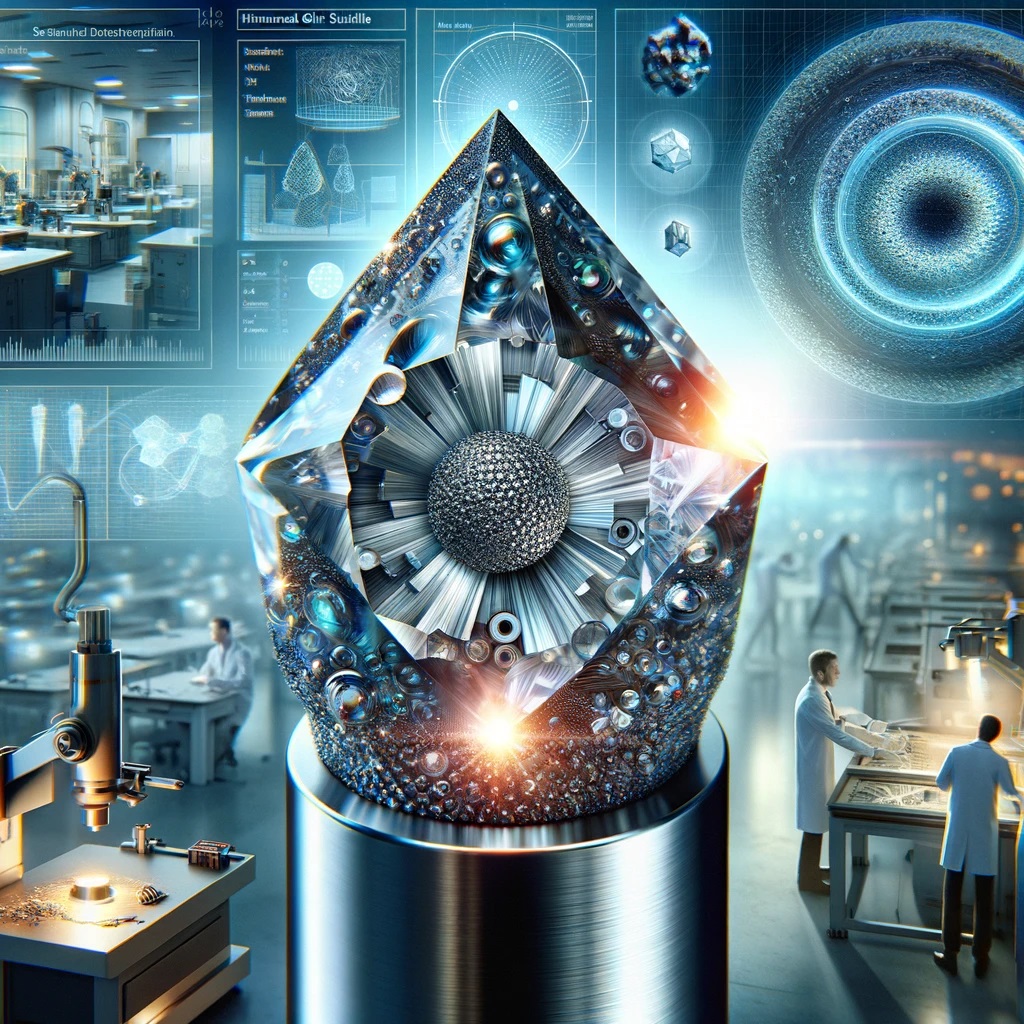Demystifying CVD Diamond: The Intricate Process Behind Its Creation
Article Date
08 May 2024
CVD diamond, short for Chemical Vapor Deposition diamond, is a technological marvel that has transformed various industries. But have you ever wondered how this extraordinary material is actually made? In this blog post, we will delve into the intricate process behind the creation of CVD diamond, shedding light on the fascinating journey from carbon-rich gas to a brilliant gem.
1. Understanding CVD Diamond
Before we dive into the creation process, let’s briefly understand what CVD diamond is. CVD diamonds are synthetic diamonds that share the same carbon structure as natural diamonds. They are created in a controlled laboratory environment, allowing for precise engineering and customization.
2. Carbon-Rich Precursor Gas
The journey of CVD diamond begins with a carbon-rich precursor gas, typically methane (CH4). This gas serves as the source of carbon for the diamond growth process. Hydrogen (H2) is also introduced as a carrier gas to facilitate the chemical reactions.
3. Reactor Chamber
Inside a specialized reactor chamber, the precursor gas mixture is introduced under controlled conditions. The chamber is typically maintained at low pressure and high temperature, replicating the extreme conditions found deep within the Earth where natural diamonds are formed.
4. Activation of Precursor Gas
To initiate the diamond growth process, energy is applied to the precursor gas mixture. This energy source, often in the form of microwave radiation, creates a plasma in the chamber. This plasma breaks down the methane molecules into carbon atoms, which are the building blocks of the diamond.
5. Diamond Growth
The carbon atoms, now in their elemental form, begin to crystallize and bond together on a diamond substrate or seed crystal. This seed crystal acts as a template for the growth of the CVD diamond. Over time, layer by layer, carbon atoms are added to the growing diamond structure.
6. Controlled Growth
The growth process is carefully controlled to achieve the desired size and quality of the CVD diamond. Precise control of temperature, pressure, and gas composition allows for customization, resulting in diamonds with specific characteristics.
7. Cooling and Solidification
Once the desired size and quality are achieved, the CVD diamond is gradually cooled down to stabilize its crystal structure. This cooling process ensures that the synthetic diamond maintains its brilliance and hardness.
8. Cutting and Polishing
After solidification, the CVD diamond is cut and polished to reveal its dazzling brilliance. Skilled craftsmen work to shape and refine the diamond into various forms, from gemstones for jewellery to industrial components for cutting tools.
The creation of CVD diamond is a meticulously controlled process that involves the transformation of carbon-rich gases into brilliant gem-quality diamonds. This technology has opened up a world of possibilities, from revolutionizing the jewellery industry to providing advanced materials for cutting-edge technologies.
By understanding the intricate process behind CVD diamond creation, we gain a deeper appreciation for this remarkable material’s versatility and potential. At Shannon Abrasives, we specialize in offering high-quality CVD diamonds for various applications. Contact us today to explore how CVD diamonds can elevate your projects, whether in jewellery design, industrial applications, or advanced research.



